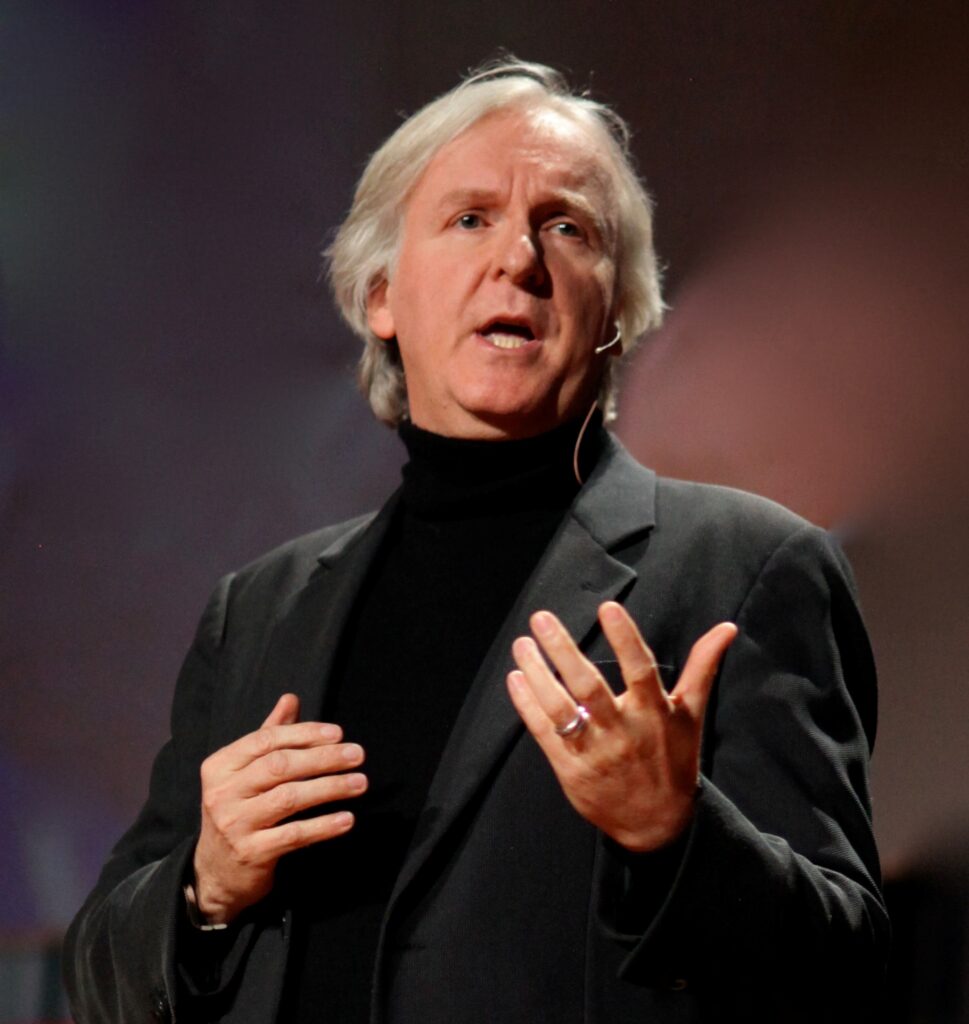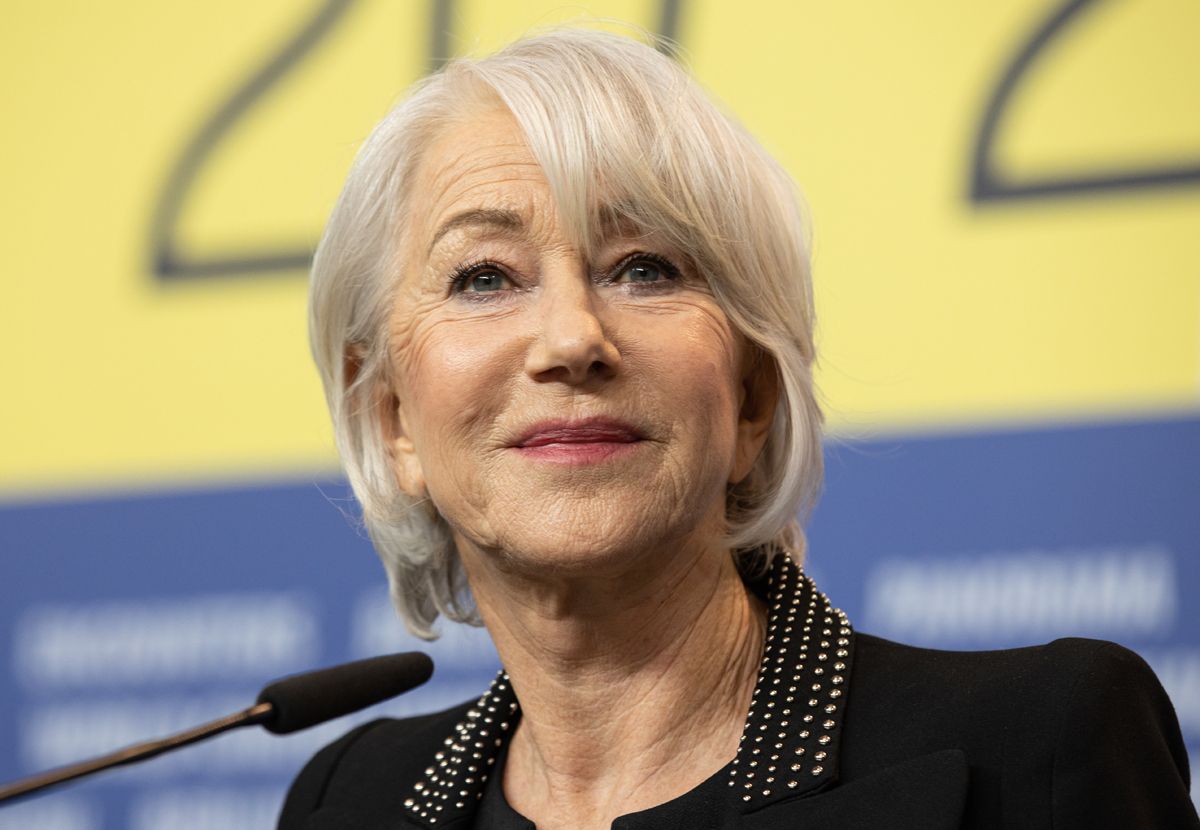
James Cameron’s 1997 epic, ‘Titanic,’ remains a cinematic titan, anchoring itself firmly in the pantheon of Hollywood’s most beloved and highest-grossing films. Decades after its initial release, the tragic love story of Jack and Rose aboard the ill-fated ‘Ship of Dreams’ continues to captivate audiences worldwide, a testament to Cameron’s visionary storytelling and meticulous craftsmanship. It’s no small feat that the film ties with ‘Lord of The Rings: The Return of the King’ for the most Oscar wins in history, a remarkable achievement that solidifies its cultural and critical impact. Its indelible mark on cinema is undeniable, placing it alongside the likes of Cameron’s own ‘Avatar’ and ‘Avengers: Endgame’ in box office dominance.
Yet, even for a director known for his unwavering confidence and perfectionism, ‘Titanic’ harbors a singular, deep regret that has lingered in the mind of its creator. It’s a regret not about the film’s massive scale, its groundbreaking visual effects, or even its fictional romance, but rather a profoundly personal and historical one. This regret centers on the portrayal of a real-life individual, a decision that stirred significant controversy and heartfelt indignation among the descendants of the character depicted.
This article delves into the complexities of James Cameron’s regret, meticulously dissecting the specific scene, its historical context, and the profound ripple effects it had beyond the silver screen. We will examine the director’s own introspections on balancing dramatic narrative with factual accuracy, the surprising apology that followed, and the ongoing dialogue about the ethical responsibilities inherent in bringing history to life on film. Prepare to navigate the nuanced waters of a filmmaker’s conscience, where the pursuit of compelling storytelling intersected with the unyielding truth of the past.

1. **The Specific Portrayal of First Officer William McMaster Murdoch**The central piece of James Cameron’s regret in ‘Titanic’ revolves around his depiction of First Officer William McMaster Murdoch, a pivotal figure during the ship’s tragic sinking. In one of the film’s most harrowing sequences, as chaos grips the deck during the final hours of the RMS Titanic, Murdoch is shown committing two deeply unsettling acts. He shoots a panicked passenger in a desperate attempt to maintain order, and then, overwhelmed by guilt and despair, he turns the gun on himself, ending his own life.
This dramatic moment serves as a powerful, albeit grim, narrative beat within the film, designed to underscore the terrifying descent into anarchy as the ship goes down. It portrays Murdoch as a man pushed to his breaking point, making an impossible decision under extreme duress, followed by an immediate, tragic reckoning. For Cameron, this portrayal was a potent way to convey the immense pressure and psychological toll experienced by the officers on board.
Cameron himself articulated his thought process behind this scene, stating, “In the case of First Officer William McMaster Murdoch, I took the liberty of showing him shoot somebody and then shoot himself.” He explained his rationale as a storyteller, noting, “He’s a named character; he wasn’t a generic officer. We don’t know that he did that, but you know the storyteller in me says, ‘Oh.’ I start connecting the dots: he was on duty, he’s carrying all this burden with him, made him an interesting character.” This cinematic choice, however, would soon become the subject of intense scrutiny and personal anguish for others.
While the scene certainly added a layer of visceral drama to the film, its connection to a real historical figure meant it carried a weight far beyond mere fiction. The decision to attribute such a specific and tragic sequence of events to a named, historical individual, rather than a generic character, laid the groundwork for the profound regret Cameron would come to express. It was a creative liberty that inadvertently collided with a deeply cherished historical memory.

2. **The Historical Inaccuracy of Murdoch’s Fate**The film’s dramatic portrayal of First Officer William McMaster Murdoch as a murderer who commits suicide stands in stark contrast to historical accounts. Numerous sources and the collective memory in his native town of Dalbeattie, Scotland, paint a very different picture of the man. Far from being a cowardly murderer, real-life evidence suggests that Murdoch was a hero during the sinking.
As the executive vice-president of 20th Century Fox studio, Scott Neeson, later acknowledged, traveling to Dalbeattie to apologize, the movie “never intended to portray him as a coward.” However, the on-screen action directly contradicted the local sentiment and the historical understanding of Murdoch’s actions. The depiction became a clear instance of creative license overriding documented history, causing significant distress to those who held his memory dear.
“To many people, he is a Scottish hero,” a source told USA Today, highlighting the stark discrepancy between the film’s narrative and public perception. This sentiment is reinforced by accounts suggesting Murdoch “did his duty, loaded up more people onto the lifeboats than other officers, and he responded as best he could to the task assigned to him.” The film’s version, therefore, wasn’t just a deviation; it was a damaging revision of a hero’s legacy.
The British Titanic Inquiry, a formal investigation into the disaster, later concluded that Murdoch was not to blame for the sinking, further cementing his positive historical standing. His body was never recovered, adding another layer of unresolved mystery to his actual fate. The movie’s definitive, and negative, conclusion to his story was thus a significant historical misstep, sparking understandable outrage and leading to Cameron’s later expressions of remorse.

3. **The Deep Hurt Caused to Murdoch’s Ancestors**The impact of First Officer William McMaster Murdoch’s portrayal in ‘Titanic’ extended far beyond historical debates; it caused profound and lasting hurt to his living family members. For Murdoch’s ancestors, particularly those in his hometown of Dalbeattie, Scotland, seeing a respected relative depicted as a killer and a suicide in a globally popular film was deeply upsetting and offensive.
“To many people, he is a Scottish hero,” a source emphasized, underscoring the stark difference between the film’s narrative and their family’s proud legacy. The community had erected a memorial to the sailor after his death, a clear indication of their admiration. This community and family pride clashed violently with the cinematic fiction.
Murdoch’s nephew, Scott Murdoch, publicly voiced his indignation, telling BBC News in 1998, “From my own family connections and also from my father having spoken to various officers who survived, he didn’t commit suicide. If someone says to you somebody committed suicide when he hadn’t you take objection.” This statement powerfully conveys the deep personal offense taken by the family at what they perceived as a slanderous misrepresentation.
The family members were understandably upset by the movie’s specific details, which cast a dark shadow over Murdoch’s reputation. This strong family reaction was a critical factor in James Cameron’s eventual realization of the insensitivity of his depiction, serving as a powerful reminder of the human cost of artistic liberty when dealing with real historical figures. Their voices ultimately prompted an unprecedented apology from the studio and the director himself.
4. **James Cameron’s Admission of Insensitivity**Following the widespread backlash and the direct grievances voiced by First Officer William McMaster Murdoch’s family, James Cameron came to acknowledge the profound insensitivity of his portrayal. This realization marked a significant moment for the director, who is not typically known for backtracking on his artistic choices. The sheer volume and sincerity of the family’s distress clearly resonated with him, prompting a rare admission of error.
Cameron explicitly stated his regret, telling USA Today, “I think I wasn’t as sensitive about the fact that his family, his survivors, might feel offended by that, and they were.” This candid confession highlights a critical blind spot in his initial creative process – a focus on dramatic storytelling that overshadowed the ethical responsibility towards real individuals and their legacies. He recognized that the human element of historical depiction had been overlooked in his pursuit of narrative impact.
His apology further solidified his understanding of the unintended consequences. In 2004, he publicly stated, “I think I have come to the realization that it was probably wrong to portray a specific person, in this case, First Officer Murdoch, as the one who fired the weapon. First Officer Murdoch has a family and they took exception to that, and I think rightly so.” This statement marked a clear shift, moving beyond a simple explanation of creative intent to a full acceptance of accountability.
This admission of insensitivity wasn’t just a fleeting comment; Cameron has continued to express regret over the years. He continually acknowledges that he was “being a screenwriter” and not thinking “about being a historian,” failing to consider the profound emotional toll his choices would take. It’s a testament to the enduring impact of the family’s feelings that Cameron has repeatedly returned to this specific regret, demonstrating a genuine, if belated, empathy.
5. **The Conflict Between Storyteller and Historian**James Cameron’s regret illuminates a classic tension in historical filmmaking: the conflict between the demands of compelling storytelling and the imperative for historical accuracy. Cameron himself described this internal struggle, noting how “the storyteller in me says, ‘Oh.’ I start connecting the dots” to create an engaging character arc for Murdoch. This drive to craft a gripping narrative led him to embellish, and ultimately distort, a real person’s final moments.
He admitted, “I was being a screenwriter; I wasn’t thinking about being a historian.” This candid reflection reveals the mindset that allowed for the controversial depiction. For a filmmaker, the desire to create an “interesting character” or a dramatic turning point often takes precedence, especially when faced with ambiguous historical accounts. The opportunity to add depth and tragedy to a supporting role can be creatively irresistible.
However, as Cameron later realized, this approach carries a significant “responsibility that one carries when you’re making what’s essentially a big docudrama because you’re telling the story of something that really happened, and I did populate it with real people.” The line between fiction and reality becomes blurred in such productions, and the audience often assumes a high degree of factual fidelity, particularly for named historical figures.
This internal conflict ultimately led to Cameron’s regret, as he recognized that his artistic liberties had encroached upon a real family’s memory and a town’s heroic narrative. The realization underscored the unique ethical challenge faced by creators of docudramas: how to honor historical truth while still delivering a powerful and emotionally resonant story. It’s a delicate balance, and one that Cameron admits he misjudged in this particular instance.
Read more about: Beyond the Sunset: 7 American Folk Heroes Whose Lives Took Disturbing Turns

6. **Ewan Stewart’s Regret as the Actor**The impact of First Officer William McMaster Murdoch’s controversial portrayal wasn’t limited to James Cameron and the Murdoch family. Ewan Stewart, the actor who brought Murdoch to life on screen, also expressed a degree of regret and introspection regarding his role. His comments highlight the often-overlooked ethical dimension faced by performers when embodying historical figures, particularly those whose legacies are contested.
Stewart admitted, “I’m ashamed to say it, really, now — I hadn’t really given that a lot of thought, that I was playing a real person.” This statement from the actor adds another layer to the discussion, revealing that the full weight of portraying a historical character—and the potential for affecting living relatives—was not immediately apparent during the production process. The focus during filming is often on performance and storytelling, not necessarily on historical minutiae or family sensibilities.
His regret mirrors Cameron’s own, albeit from a different vantage point. It underscores how the creative ecosystem of a major film production can sometimes lose sight of the individual human elements involved, especially when dealing with historical events populated by real people. The performance, while integral to the film’s narrative, inadvertently contributed to the historical inaccuracy and subsequent pain for Murdoch’s family.
Stewart’s reflection serves as a poignant reminder that actors, too, are part of the complex ethical equation in docudramas. Their embodiment of a character can solidify a particular interpretation in the public consciousness, for better or worse. His candid admission further emphasizes the collective responsibility within filmmaking to consider the real-world implications of their portrayals, particularly when dealing with sensitive historical material and named individuals.
7. **The Actual Eyewitness Accounts of the Shooting**The film’s depiction of William McMaster Murdoch’s actions, specifically the shooting of a passenger and his subsequent suicide, was based on selective and ambiguous eyewitness accounts, rather than clear, definitive evidence. While some testimonies did describe a shooting incident involving an officer, none conclusively and unequivocally linked these tragic events to Murdoch.
Multiple survivors claimed that there was a shooting while Collapsible C was being loaded. First-class survivor Hugh Woolner, in a private letter and later at the United States Senate Inquiry, testified that he saw “two flashes of a pistol in the air ordering a crowd of the crew out of the boat” and heard “Mr. Murdoch shouting, ‘Get out of this, clear out of this.’” Crucially, Woolner’s account does not state that Murdoch shot any passengers or himself, only that he fired warning shots.
Another first-class passenger, George Rheims, wrote a letter claiming he “saw an officer commit suicide after announcing, ‘Gentlemen, each man for himself. Good-bye.’” However, Rheims did not directly name Murdoch as the officer. Similarly, a story surfaced in The Chicago Tribune via Dr. Frank H. Blackmarr, who related an account from third-class passenger Eugene Daly. Daly claimed to have seen an officer shoot two men trying to get into a lifeboat, then heard another shot and saw the officer lying on the deck, believed to have shot himself. Again, Daly did not name Murdoch as this officer.
James P. Delgado, director of the National Oceanic and Atmospheric Administration, confirmed that there is no clear evidence of Murdoch taking his own life. While Captain Smith, Chief Officer Wilde, and First Officer Murdoch were all given pistols and were present at the loading of Collapsible Lifeboat C where eyewitness accounts claim the shooting happened, none of these men survived the sinking. This lack of survival meant that direct confirmation of who did what was impossible, leaving the specific details shrouded in uncertainty. Cameron’s choice to definitively attribute the most severe actions to Murdoch was, therefore, an interpretive leap, not a factual recreation.
His decision to connect these disparate and unconfirmed dots to a named, historical individual for dramatic effect ultimately became the genesis of his long-standing regret. It highlighted the peril of constructing a definitive narrative from a patchwork of inconclusive historical fragments, especially when the reputation of a real person hangs in the balance.
Read more about: Beyond the Sunset: 7 American Folk Heroes Whose Lives Took Disturbing Turns

8. **The Controversial Portrayal of J. Bruce Ismay**While the controversy surrounding First Officer William McMaster Murdoch garnered the most direct apologies from James Cameron and 20th Century Fox, he wasn’t the only real-life figure whose cinematic portrayal diverged significantly from historical consensus. J. Bruce Ismay, the managing director of the White Star Line, faced an arguably even more scathing depiction in ‘Titanic.’ The film painted him as an arrogant, hubris-driven executive who pressures Captain Smith to sail faster, implying a direct link to the ship’s tragic fate, before cowardly sneaking onto a lifeboat meant for women and children.
This on-screen narrative solidified a largely negative perception of Ismay in the public consciousness, portraying him as a figure of greed and self-preservation. The film shows a seemingly disgusted Murdoch witnessing Ismay’s escape, further cementing the audience’s judgment. It’s a powerful character arc, designed to evoke strong reactions, yet one that, like Murdoch’s, takes considerable liberties with historical nuances and alternative accounts.
However, historical records offer a far more complex picture of Ismay’s actions. Little evidence suggests he ever pressured Captain Smith to increase the ship’s speed, or that Smith, a seasoned veteran, would have easily caved to such demands. More critically, first-hand accounts from other survivors on his lifeboat attested that there were no women or children nearby at the time he boarded, and he was explicitly ordered by an officer to get into the boat. This dramatically undercuts the film’s ‘cowardly sneak’ narrative, transforming a potentially pragmatic decision under duress into a moment of cinematic villainy.
Unlike Murdoch, who received a direct apology from Cameron, the portrayal of Ismay has largely remained uncommented upon by the director as a source of regret. This disparity highlights the selective nature of public and artistic accountability, raising questions about why some historical inaccuracies provoke a stronger response from creators than others. It underscores the film’s broader challenges in balancing dramatic needs with the fidelity owed to real individuals, even those historically perceived as less heroic.
9. **The Ethical Quandary of Docudramas and Real People**The controversies surrounding both Murdoch and Ismay serve as potent illustrations of the unique ethical quandary inherent in creating docudramas. When filmmakers choose to populate their narratives with real historical figures, especially those from well-documented, traumatic events, they assume a profound responsibility that extends beyond mere storytelling. As Cameron himself articulated, “this is the responsibility that one carries when you’re making what’s essentially a big docudrama because you’re telling the story of something that really happened, and I did populate it with real people.”
Audiences, particularly with a film as meticulously detailed as ‘Titanic,’ often approach the viewing experience with an implicit trust in its historical accuracy. When specific, named individuals are portrayed in definitive, often dramatic, ways, it shapes public perception and can irrevocably alter historical legacies. This places an enormous burden on the creative team to ensure that artistic license does not cross the line into slander or egregious misrepresentation, particularly when living descendants are directly affected.
The tension between crafting a compelling narrative and honoring historical truth becomes a tightrope walk. A screenwriter’s instinct to “connect the dots” and create “interesting characters,” as Cameron admitted, can inadvertently lead to significant historical distortions. This is especially true when historical accounts are ambiguous or contradictory, offering fertile ground for dramatic interpretation that might not align with the most favorable or even probable version of events.
Ultimately, the ethical framework for docudramas must consider the human cost of artistic liberties. While a film is a work of art, its impact on the reputations of real people and the sensitivities of their families cannot be ignored. The Murdoch incident, in particular, became a global lesson in the profound moral weight carried by filmmakers when they choose to blend fact with fiction in such a high-profile manner.

10. **The “It’s Just Fiction” Defense and its Limitations**A common retort to criticisms of historical inaccuracy in film is the dismissal that “it’s just fiction” or “it’s just a movie.” While valid for purely fictional narratives, this defense largely falls flat when applied to a film like ‘Titanic,’ which positioned itself, and was widely received, as a meticulously researched historical epic. James Cameron famously went to great lengths for historical detail, from the ship’s interior design to the sequence of events during the sinking, making the audience believe they were witnessing history unfold.
This dedication to authenticity in myriad other aspects of the film creates a critical expectation among viewers: if the rivets are accurate, surely the prominent historical figures and their actions are too. When the film then fabricates or heavily dramatizes key moments for named individuals, the “it’s just fiction” argument loses its persuasive power. The moral problem arises precisely because the film takes such pains to *appear* historically accurate, making the audience less likely to differentiate between established fact and creative invention.
The core issue, as highlighted by the protests from Murdoch’s family, is the potential for a fictionalized narrative to become the prevailing historical record in the public consciousness, overshadowing more nuanced or positive truths. For millions of viewers worldwide, the film’s version of Murdoch’s final moments became *the* truth, irrespective of whether it was officially declared fictional. This profound impact on historical memory and reputation cannot be simply wished away by an appeal to artistic license.
Therefore, the responsibility extends beyond merely labeling a film as a docudrama; it necessitates a heightened awareness of how specific portrayals of real people will be interpreted and absorbed by a global audience. The “it’s just fiction” defense, while convenient for filmmakers, offers little solace to those whose family legacies are rewritten on screen for dramatic effect, underscoring the limitations of such an argument in the face of widespread cultural impact.
11. **James Cameron’s “I Wouldn’t Change a Frame” Stance**Adding another intriguing layer to Cameron’s relationship with ‘Titanic’ and its historical portrayals is his seemingly contradictory declaration that he “wouldn’t change a frame” of the film. This statement, made years after his public apology to the Murdoch family and his admission of insensitivity, showcases a complex internal dynamic of a filmmaker wrestling with artistic integrity versus acknowledged error. It’s a classic Cameron stance, reflecting his reputation as a director rarely given to second-guessing his creative decisions.
“Why would I change a frame?” he reportedly asked, pointing to the film’s unprecedented success: 14 Academy Award nominations, 11 wins, and its status as one of the highest-grossing movies in history. He asserted that he doesn’t think he’s any smarter now than he was then, and believes, “artistically, don’t second guess yourself.” This perspective frames the film as a snapshot of his artistic vision and beliefs at the time of its creation, an unalterable artifact of his creative journey.
This steadfast refusal to alter the film, even in light of specific regrets, is characteristic of Cameron’s unwavering artistic conviction. It suggests that while he acknowledges the *impact* of his portrayal of Murdoch on the family, he views the scene as integral to the dramatic narrative he crafted and the emotional power it delivered. The regret, then, might be more about the unintended consequences and the insensitivity to a family’s feelings, rather than a fundamental flaw in the cinematic choice itself, from a storytelling perspective.
He further elaborated that if presented with the opportunity to make the movie again, he would “probably make the same damn movie now that I made back then.” This underlines his deep-seated belief in his original artistic choices, even those that sparked controversy. It’s a bold assertion that distinguishes a filmmaker’s conviction in their creative output from an acknowledgment of external criticisms, however valid.

12. **Reconciling Regret with Artistic Conviction**How does one reconcile a director’s deep regret over a specific portrayal with an equally firm declaration that “I wouldn’t change a frame”? This apparent contradiction speaks volumes about the complex interplay between artistic vision, ethical responsibility, and the enduring nature of a completed work. For Cameron, the regret seems to stem from the human element, the unintended hurt caused to a real family, and his oversight in not considering their perspective as a screenwriter.
His apology in 2004, where he stated, “I think I have come to the realization that it was probably wrong to portray a specific person, in this case, First Officer Murdoch, as the one who fired the weapon,” focuses on the *specificity* of the character and the *impact* on his descendants. It’s a recognition of a lapse in sensitivity, rather than a wholesale indictment of the dramatic function of the scene itself. The scene undeniably contributes to the film’s visceral depiction of chaos and despair, serving a narrative purpose that Cameron clearly still values.
Furthermore, the practicalities of filmmaking once a project is complete cannot be overlooked. As Cameron himself implicitly acknowledged, making “George Lucas-like alterations in subsequent versions” would be a monumental undertaking, potentially unraveling a deeply woven narrative and artistic fabric. The scene is too integrated into the plot, the character motivations, and the overall emotional arc to simply remove or modify without significant ripple effects throughout the entire film.
Therefore, Cameron’s stance is less about a true contradiction and more about a nuanced understanding of his different roles: the empathetic individual acknowledging hurt, and the uncompromising artist standing by his work. He admits to a misjudgment in his historical sensitivity but maintains that the creative decisions made at the time were authentic to his vision, and thus, intrinsically part of the cinematic legacy he created.
13. **The Enduring Cultural Resonance of ‘Titanic’**Despite the specific historical controversies and Cameron’s regrets, ‘Titanic’ has cemented its place as an unshakeable cultural behemoth. Its immense popularity, record-breaking box office performance, and unprecedented Oscar haul are testaments to its powerful storytelling and cinematic craftsmanship. The film’s ability to weave a timeless love story against the backdrop of an iconic tragedy has transcended generations, captivating audiences worldwide for over two decades.
Its enduring appeal is not merely anecdotal; the film’s repeated theatrical re-releases, including a recent 25th-anniversary run, continue to draw significant audiences, proving its lasting relevance. Cameron himself described these re-releases as a “fun social experiment” to gauge how much ‘Titanic’ still resonates in the zeitgeist. The results consistently demonstrate that the ‘Ship of Dreams’ still holds a profound meaning for millions, far beyond its initial run.
Indeed, the film’s cultural impact extends beyond its commercial success. It has influenced countless subsequent films, cemented the careers of its lead actors, and continues to be a benchmark for epic romance and disaster narratives. The discussions surrounding its historical accuracy, while significant, have done little to diminish its status as a beloved and critically acclaimed piece of cinema, highlighting the complex relationship between art, history, and public adoration.
The ethical debates and Cameron’s admissions of regret have, if anything, added another layer to the film’s rich legacy, prompting deeper conversations about the responsibilities of artistic creation. Yet, the core emotional resonance and spectacular scale of ‘Titanic’ ensure its place not just in film history, but in the broader cultural imagination, proving that even a film with acknowledged imperfections can achieve an almost mythical status.
Read more about: Fact vs. Fiction: 14 Historical Myths You Probably Still Believe

14. **Lessons Learned: The Delicate Balance of History and Hollywood**The saga of James Cameron’s ‘Titanic’ and his particular regrets offers a powerful, enduring lesson for Hollywood and filmmakers venturing into historical docudramas: the delicate, often precarious, balance between artistic freedom and ethical responsibility. The controversies surrounding First Officer Murdoch and J. Bruce Ismay underscore that when real names and real tragedies are involved, the pursuit of dramatic impact must be tempered with profound sensitivity to historical truth and the legacies of individuals.
Cameron’s journey from “being a screenwriter” to acknowledging the hurt caused to Murdoch’s family illustrates a critical evolution in understanding the broader implications of filmmaking. It highlighted that for a film so dedicated to historical minutiae, a similar rigor and respect must be extended to the human figures who lived through those events. The implicit trust audiences place in such a meticulously presented historical narrative carries a heavy moral weight that filmmakers cannot afford to disregard.
Ultimately, ‘Titanic’ remains a colossal cinematic achievement, a testament to visionary direction and storytelling prowess. Yet, its story also serves as a timeless case study, reminding us that the echoes of history are not merely plot devices, but living memories. It challenges creators to navigate the treacherous waters where artistic license meets factual fidelity, ensuring that the ship of dreams, however grand, does not inadvertently sink the reputation of those who sailed on it for real.
The ongoing dialogue, fueled by Cameron’s own introspections and the enduring love for the film, continues to shape our understanding of how history should be presented on the silver screen. It’s a conversation that ensures ‘Titanic’ remains not just a movie, but a significant touchstone in the evolving ethics of historical storytelling.









